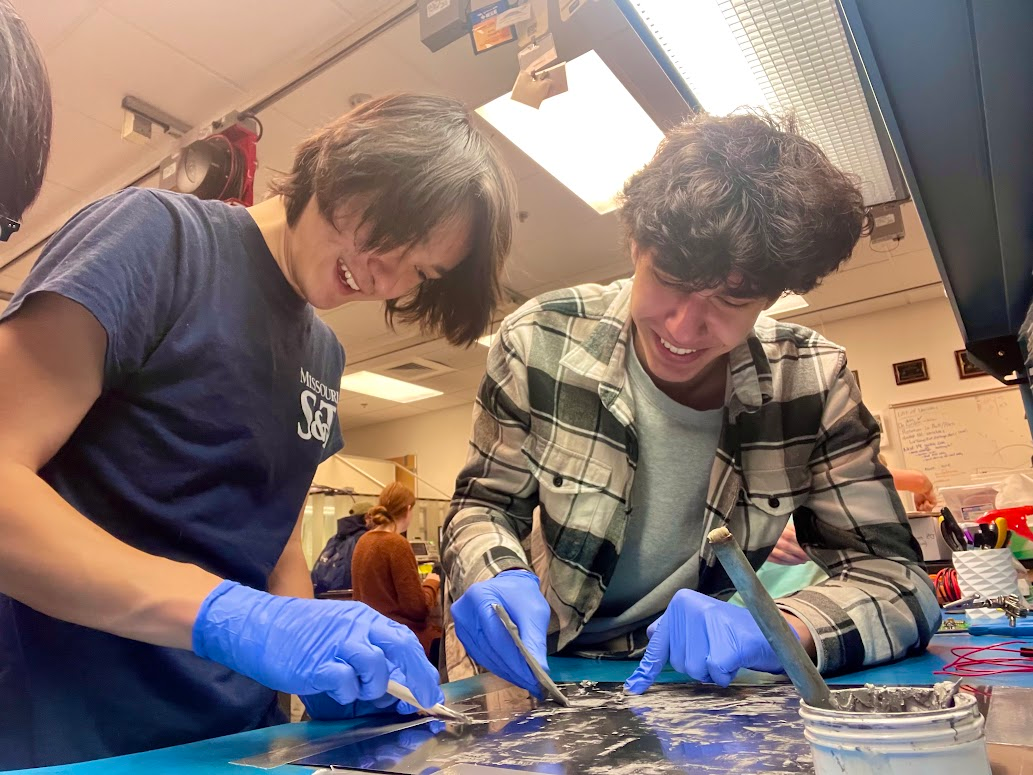Missouri S&T students built a satellite. It launches on a SpaceX rocket next year
In a first for Missouri University of Science and Technology, a student-designed satellite is expected to launch into orbit on Feb. 1, 2024, on a SpaceX Falcon 9 rocket.
The Satellite Research Team of undergraduate aerospace engineering students with changing members has worked on the project for years.
Two of the team members talked about how emotional launch day may be for them.
"I will be very, very nervous for sure," said Emily Doddemeade, a senior from Denver. "My nerves will be off the chart."

Being an undergraduate student with a satellite in orbit that she helped build before her career starts is something special, she said.
"It will be very awesome," Doddemeade said.
She's a project manager on the team.
It's something few people get to experience, said Drake Beaman, a junior from Pleasant Hill, chief project engineer.
"How many people can say they have a satellite in orbit?" Beaman said. "It's one of the coolest things in the world."
The goal is to get the spacecraft into orbit and for it to work flawlessly, said Hank Pernicka, Distinguished Teaching Professor of aerospace engineering at Missouri S&T.
"It will be an exciting, nervous, fun day," Pernicka said of launch day.
The autonomous satellite, about the size of a shoebox, will orbit Earth for a week to become accustomed to space and the zero-gravity environment. Then it will test a new electrical propulsion system, Beaman said.
It should be obvious in the data the amount of pressure exerted by the propulsion system, he said.
There will be five 30-second bursts for the testing. The thruster was developed in the Advanced Plasma Lab at S&T in partnership with Froberg Space.
The satellite circuitry is an important aspect of the testing, Pernicka said.
Advertisement
"One of the technological advancements is the electronic circuitry that steps up the voltage," Pernicka said.
S&T students will retrieve the data from a Iridium Communications server on the day of the tests.
The launch has been a long time coming, Pernicka said. The project received a $200,000 grant from NASA in 2016.
"COVID upset the applecart," Pernicka said. "We had a good bit of knowledge lost from COVID."
Students came and graduated as the lab was closed or only partially open, he said.
The launch will be major accomplishment for the students, he said.
"One of the particularly educational benefits of this is the students get a close-up look at how the industry works," Pernicka said.
S&T's industry partners will be in communication about the launch, of which there will be more in the future, he said.
A pair of satellites about the size of laundry baskets should launch in the next few years. They will be deployed from the International Space Station, Beaman said. One satellite will orbit the other, tracking it. The technology could be used to assess broken satellites for possible repair or even identifying unidentified objects in orbit, Beaman said.
"We're hoping to power through it and get it approved for launch next school year," Pernicka said.
Pernicka tells students that most courses require 90% for an A grade, but dealing with spacecraft, close to 100% is required for success.
There's also a lot that's not in the students' control, including the rocket, he said. Most launches are successful, but not all.
"Sometimes they fail spectacularly," Pernicka said. "It's part of the business."
Roger McKinney is the Tribune's education reporter. You can reach him at rmckinney@columbiatribune.com or 573-815-1719. He's on Twitter at @rmckinney9.
This article originally appeared on Columbia Daily Tribune: Missouri S&T undergrads' satellite scheduled for 2024 SpaceX launch






















